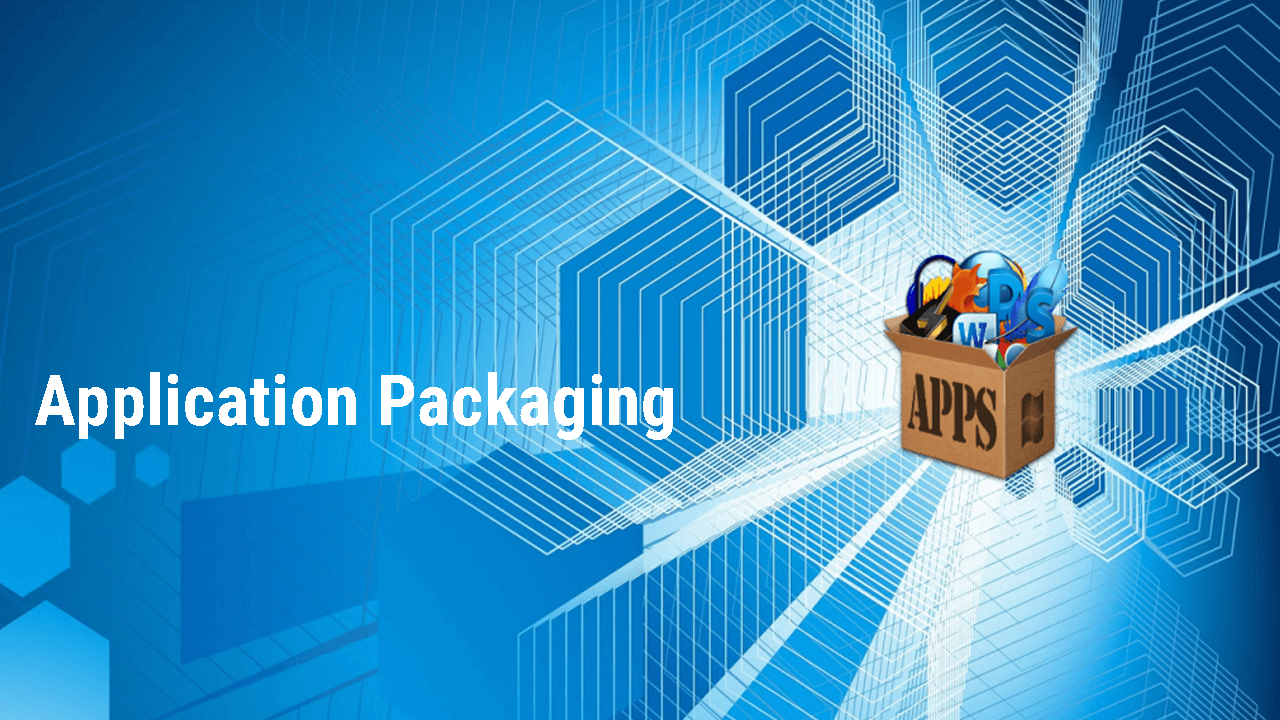Techrepack provides the best Application Packaging online training by well trained and certified trainers. We give you the skills and know-how you need to efficiently virtualize desktop applications using application packaging. We have offered courses to consultants, SMEs and individuals so that they can overcome all the challenges and become expert in the technology field. In this course we can know that application packaging is the process of creating distributable bundles of application files, registry keys, INI files and all other entities that are needed for an application to function correctly in a Windows operating system environment. These bundles are called application packages. We are the pioneers in this field and our skilled trainers will help each one of the candidates to understand the overall process. We take pride for being the number one in the industry and successfully delivering results to all our clients.
Speaking about the subject, Application packaging is a process of binding the relevant files and components to build a customized application for a customer. Before enrolling tick your prerequisites.
Here is the Overview Of Application Packaging Online Training:-
Explanation of Application Packaging / repackaging
- History of Windows Installer Technology.
- Why repackaging is required?
- What are the Problems in legacy installations?
- Major Benefits of windows installer?
- Differences between Legacy Applications (.EXE’s) & Windows installer
Applications (.MSI’s)
- About Registry.
- About Services.
- About ODBC.
- About Directory Structure.
Application Packaging Minimum Hardware & Software Requirements.
- VMWARE WorkStation 7.0/8.0.
- XP Operating System SP2.
- Install-Shield Admin Studio 2008 to 2012.
- Pre Installation Steps.
- Post Installation Steps.
- User Test Environment.
Client Application Pre-Validation Analysis.
- Commanding on Legacy Applications Installation Process
- Technical Analysis of a Client Source.
- Functionality Check & Source Behavior.
- Review of PRF (or) APRF & Installation Instruction Forms.
- Technical Review of a Legacy / MSI Application Discovery.
Admin Studio Tools.
- Re-Packager.
- Tuner.
- Editor
- Re-Packaging Tools.
- Install-Shield 2008 to 2012.
Installation Designer Tab: Functionality of the Project.
- Installation Information.
- General Information.
- Project Properties.
- Summary Information Stream.
- Add or Remove Programs.
- Product Properties.
- Organization.
- Setup Design.
- Features.
- Components.
- Application Data.
- Files & Folders.
- Redistributables.
- Merge Modules.
- Install-Shield Objects.
- Setup Prerequisite.
- System Configuration.
- Shortcuts.
- Registry.
- ODBC Resources.
- INI Files.
- CAB Files.
- Environment Variables.
- Behavior and Logic.
- Custom Action and Sequences.
- System Search.
- Property Manager.
- User Interface.
- Working with Dialogs.
- Media.
- Path Variables.
- Upgrades.
- Small Upgrades.
- Minor Upgrades.
- Major Upgrades.
- Releases.
- Patch Design.
Working With MSI Tables:
- File.
- Component.
- Feature
- Directory.
- Media
- Property.
- Shortcuts.
- Upgrade.
- Service.
- Feature Components.
Working With Transforms (.MST).
- Introduction of Transforms.
- Working with Tuner.
- Working with Editor.
- Working with Response Transforms.
- How to install transforms along with MSI’s.
Working with Application Installation User Interface Wizard Customizations.
- Introduction of UI Wizard Customizations.
- Working with Dialogs.
- Editing / Modifying UI Wizards.
- Customizing UI Wizards
- Working with Active Setup.
- Introduction of Active Setup.
- What is Active Setup?
- Creating Active Setup using Template
- Working with Stub path.
- Working with Manual Active Setup.
Working with Install-shield Silent Setup or Response File Creation.
- Introduction of.ISS / Response file.
- Creation of Install-shield Silent Setup (.ISS).
- Creation of .Log files for (.ISS).
Working With Custom Actions and Sequences.
- Introduction of Custom Action and Sequences.
- What is Custom Action?
- User Interface.
- Deferred Execution in System Context
- Immediate Execution.
Working with Add-Ins.
- Introduction of Add-Ins.
- Purpose of Add-Ins?
- Working with COM-Add-Ins.
- Working with EXCEL-Add-Ins.
Working with Customization Products.
- Introduction of Customization.
- Working with Microsoft Office 2003 Customizations.
- Working with Adobe Application Customizations.
- Working with Nero Application Customizations.
Installation Process of Packaged Application.
- Command Line Installations.
- MSIEXEC Switches.
- Transforms Installations.
- Patch File Installations.
Working with MSI Features.
- Working with Self-Healing.
- Working with Self-Repair.
- Working with ROLL-BACK.
- Installation on-Demand.
Working with in initial Level of Troubleshooting.
- How Doe’s Self-Healing Mechanization will work?
- Discovery of Self-Healing Component.
- Salvation of Self-Healing mechanization.
- How we will Difference ate Features & Components.
- Working with Features.
- Working with Components.
Working With Merge Modules.
- Introduction of Merge Module.
- Advantages of Merge Modules.
- Creation of Merge Modules.
Working With ODBC Data Source Administrator.
- Introduction of ODBC.
- Working with ODBC Applications.
Testing of Packaged Application.
- Application Functionality Checking.
- Application Behavior in Admin & User.
- Functionality Checking for Source & Packaged Applications.
Working with Vendor Application Tasks.
- Working With Build Release Wizards.
- Working With Compile.
- Working with Build.
- Adding New Language Wizard.
- Working with MSI Command Line Builder.
- Standard Dialogs.
- Skinned Dialogs.
- Redistributable Downloader.
- Prerequisite Editor.
Working with Property Manager.
- Working with ALLUSERS Property.
- Working with ROOTDRIVE.
- Working with INSTALLLEVEL.
- Working with REBOOT.
- Working with ARP SYSTEM COMPONRNTS.
- Working with Accept License Agreement.
- Working with EULA Accept.
Working with Troubleshooting Tools.
- Few ICE Errors Salvation.
- Working with Orca for Validation.
- Working with Filemon.
- Working with Regmon.
- Working with Process Monitor.
Having known about the scope and demand of Application packaging, we have a balanced online training structure that feeds from scratch to establish the enrolled candidates to propel in application packaging.

